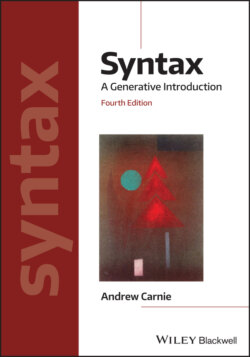Читать книгу Syntax - Andrew Carnie - Страница 20
5. A CLARIFICATION ON THE WORD “LANGUAGE”
ОглавлениеWhen I use the term language, most people immediately think of some particular language such as English, French, or KiSwahili. But this is not the way most syntacticians use the term; when we talk about language, we are often really talking more about i-language (where the i- stands for “internal”), i.e., the internal psychological/cognitive tools i.e. our competence. Confusingly, we are often sloppy and also use the term language to refer to e-languages (where the e stands for “external”). E-languages are the instantiations of the output or performance of an i-language. E-languages are what we commonly conceive of particular languages (such as French or English). In this book, we’ll be using e-language as our primary data, but we’ll be trying to come up with a model of i-language. The difference between e-languages and i-languages is very similar to the old distinction Ferdinand de Saussure made between langue (i-language) and parole (e-language8). The linguist Seth Cable gave me a great analogy to help understand these notions. Imagine language is football. Competence is how deeply you understand the rules of the game. I-language is the rules of the game themselves. E-language is an actual game or match played and performance is how well you play in a that day.
To make things even more confusing linguistics sometimes use the term language to refer to the general ability of humans to acquire an i-language and to use that i-language to produce any (particular) e-language. Noam Chomsky calls this ability the Human Language Capacity (HLC). In our football analogy this would be how well you are equipped to play.
You now have enough information to answer WBE5, GPS5, and CPS7.
